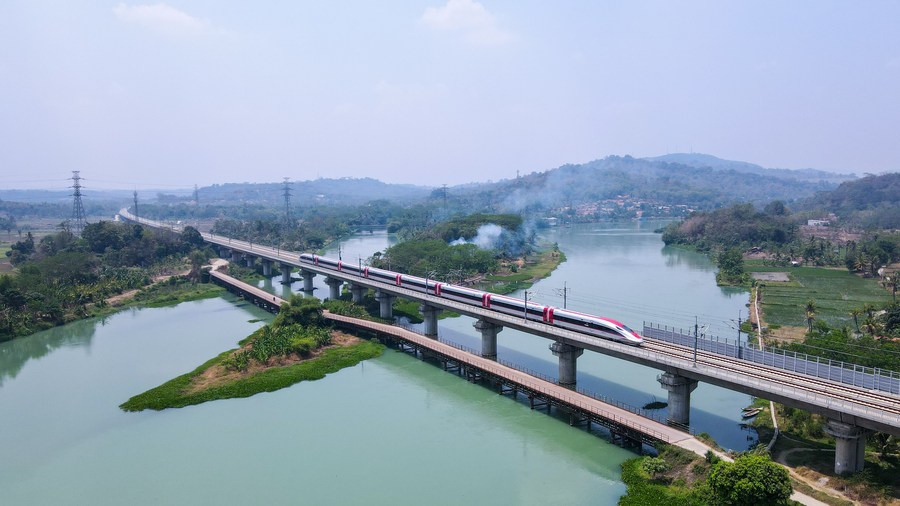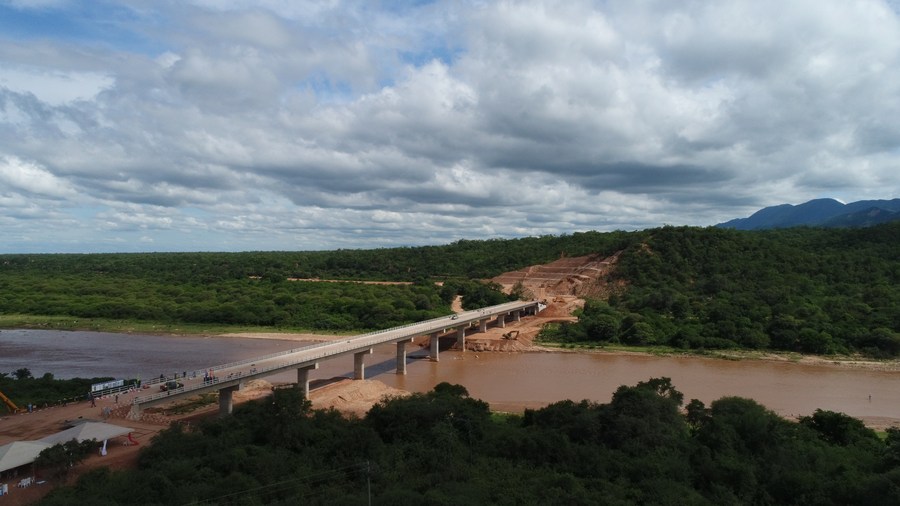Interview: Historians to hail BRI as significant project for our era, says U.S. scholar

This aerial photo taken on Sept. 30, 2023 shows a high-speed electrical multiple unit (EMU) train of the Jakarta-Bandung High-Speed Railway running in Purwakarta, Indonesia. (Xinhua/Xu Qin)
The BRI leverages China's unequaled experience and competitive advantages in constructing infrastructure which developing countries need the most, Robert Lawrence Kuhn, chairman of the Kuhn Foundation, has said.
by Xinhua writers Yang Shilong, Xie E
NEW YORK, Oct. 15 (Xinhua) -- Historians will hail the China-proposed Belt and Road Initiative (BRI) as "something of significance for our era," Robert Lawrence Kuhn, chairman of the Kuhn Foundation, has said.
"Historians 1,000 years from now will look back and will circle the Belt and Road Initiative as something of significance for our era today," Kuhn told Xinhua in a recent interview ahead of the third Belt and Road Forum for International Cooperation, as the BRI will mark its 10th anniversary.
The BRI is a "primary" engagement that China has brought to the world, promoted by President Xi Jinping as an international approach, and "it has a remarkable and absolutely essential element," said Kuhn, who has been tracking the BRI literally from its start.
The veteran China-hand spoke at early BRI conferences on "The New Silk Road Economic Belt" and "The 21st Century Maritime Silk Road" in 2014 and 2015, respectively.
Kuhn said the BRI leverages China's unequaled experience and competitive advantages in constructing infrastructure which developing countries need the most.
"So the Belt and Road Initiative is the foundation to build infrastructure in countries. No country in the world has anywhere near the experience and success that China has in building infrastructure: rail, high speed rail, ports, airports, telecommunications, power plants," he said.

This aerial photo taken on Feb. 6, 2020 shows the Parapeti Bridge in Santa Cruz, Bolivia. The Parapeti Bridge is one of the four longest bridges of the El Espino-Charagua-Boyuibe Highway project, a flagship project within the framework of the China-proposed Belt and Road Initiative (BRI). (Xinhua/Xin Yuewei)
"These are all the first stage requirements for development of any kind, certainly industrial development, and improving the standards of living (of) the people (in) the country. So this is the most significant, all the other initiatives can be built on top of the Belt and Road," he said.
More importantly, the BRI is sustainable as the win-win cooperation model spearheaded by China and BRI partners has delivered tangible results in the past 10 years, Kuhn said.
"It is not China being a charitable giver to the world ... Sure, all of that is true in other countries (that) benefit in many ways. But China benefits itself. And that's good, because that makes it sustainable," he said.
However, the BRI is not all "roses and cheers" and it faces lots of challenges ahead, said Kuhn, the upcoming Belt and Road Forum for International Cooperation "is a good mid-course assessment, correction and plan going forward."
Now we're seeing the third international event in which China is reviewing the past, looking at the successes, learning from the experience and practices, and determining what is the optimization for future development of these things, said Kuhn.
"What was good in the past is not the same in the future, everything changes. China's own economy is dramatically changing over time, moving to high quality," he added.
By June 2023, China had signed more than 200 BRI cooperation agreements with more than 150 countries and 30 international organizations across five continents, yielding a number of signature projects and small-scale yet impactful projects.


